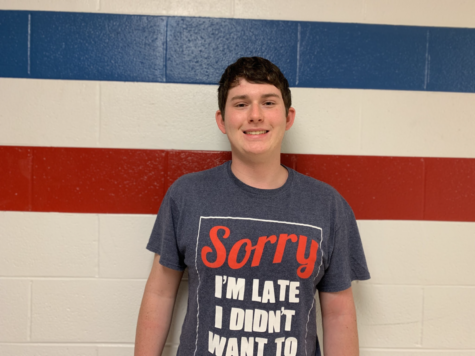Learn about COVID-19
April 28, 2020
Inovio Pharmaceuticals, an American based pharmaceutical company, has already started the experimentation process of creating a publicly available vaccine for the coronavirus, or COVID-19. Speaking at the White House during the U.S. Coronavirus Task Force Meeting on March 2nd, 2020, Inovio’s President and CEO, Dr. J. Joseph Kim, said, “Inovio is the leader in coronavirus vaccine development and the only company with a Phase 2 vaccine for a related coronavirus that causes Middle East Respiratory Syndrome (MERS). Using our modern DNA medicines platform, we designed our DNA vaccine INO-4800 in three hours after the publication of the genetic sequence of the novel coronavirus that causes COVID-19.”
(Inovio Accelerates Timeline for COVID-19 DNA Vaccine INO-4800, March 03, 2020, Human Trials Planned for April; One Million Doses Expected by Year End
http://ir.inovio.com/news-and-media/news/press-release-details/2020/Inovio-Accelerates-Timeline-for-COVID-19-DNA-Vaccine-INO-4800/default.aspx)
When this article was originally written, (March 1st 2020), the company had planned to start human testing of the vaccine early this summer. However, with their accelerated timeline, those trials were updated and began in the U.S. this April 6th, 2020, after very promising preclinical animal studies which indicated increased immune response to Covid-19 (TechCrunch, April 6, 2020, Etherington) According to Dr. Kim, “We immediately began preclinical testing and small-scale manufacture and have already shared robust preclinical data with our public and private partners. We plan to begin human clinical trials in the U.S. in April and soon thereafter in China and South Korea, where the outbreak is impacting the most people. We plan on delivering one million doses by year end with existing resources and capacity.” This is a stunning accomplishment. Inovio’s advanced genetic sequencing DNA medicines platform accomplished in lightning speed–in a matter of a few hours–what normally takes months or even years. Many are hoping this accomplishment will be able to beat the anticipated pandemic of the virus in the USA as predicted by the CDC. Inovio’s DNA vaccine injects engineered plasmid (a small genetic structure) into a person so that their cells can produce antibodies which will fight a specific infection. These sorts of vaccines have been utilized in veterinary medicine, but have never been approved for use on humans. As of April 6th, 2020, Inovio had already produced thousands of doses of INO-4800 (their vaccine) in only a few weeks (TechCrunch, April 6, 2020, Etherington). Substantial funding from many organizations, including the Bill and Melinda Gates Foundation, has fueled success in this lightning speed race against time in battling COVID-19.
A number of other pharmaceutical companies are also in various developmental phases regarding similar vaccines. One such company, Moderna Inc. has already shipped initial batches of its COVID-19 vaccine to U.S. Government researchers. These vaccine batches were originally to be used in the first human trials beginning April, 2020, however that timeline was moved up and those trials began mid-March 2020 (TechCrunch, April 6, 2020, Etherington). The hope is that this vaccine might help deter the current epidemic. The National Institute of Allergy and Infectious Diseases, located in Bethesda, Maryland, will begin clinical trials of the vaccine on twenty to twenty-five healthy individuals (Wall Street Journal, March 10, 2020, Drugmaker Moderna Delivers First Experimental Coronavirus Vaccine for Human Testing, Peter Loftus, Updated Feb. 24, 2020 7:16 pm ET).
As of April 23, 2020, there are nineteen front runners in the race for a vaccine with dozens more at their heels. Many new vaccine technologies have been invented, introduced and deployed in this race to develop vaccines for COVID-19, including COVID-19’s already occurring mutations. Eight of the front runners are being developed here in the U.S. with others emanating from countries around the world like the UK, Belgium, Canada, Germany, China, Italy and France (The Scientist, April 7, 2020, Austin). Big Pharma, academic researchers at colleges, universities and medical centers, as well as smaller privately held companies are all feverishly working and committed to finding viable ways to combat the horrors that this virus has unleashed upon the human race (The Scientist, April7, 2020, Austin).
In tandem with research into a successful vaccine for COVID-19 are numerous efforts to develop usage of medicines designed to prevent COVID-19 from infecting human cells. Much of this effort has been placed on utilizing anti-viral medicines already in use to combat other significant infections. Remdesvir is one of these medicines. It was originally developed to fight Ebola and has seemed promising based on data from COVID-19 patients treated at University of Chicago, however a study in China was less promising. An ongoing trial of Remdesvir, with regard to its effect on COVID-19 patients is being conducted with a control group in hopes that clearer answers will be provided on the efficacy of this medicine battling this virus (STAT, April 27, 2020, Herper). Yet another groundbreaking treatment, from University of Louisville researchers, is a newly developed technology believed to prevent the coronavirus from infecting human cells. Professors Paula Bates, John Trent, and Don Miller discovered an aptamer and initially used it as a therapeutic drug to fight multiple cancers. Bates said they plan to use the same dose for COVID-19 patients as they did with cancer patients. “Developing a drug from scratch takes many, many years… we’re hoping we can kind of chop a lot of time off there” Bates said. Research and experiments conducted at the U of L Center for Predictive Medicine for Biodefense and Emerging Infectious Diseases has shown the aptamer is effective against the virus at safe doses (TechTimes, April 24, 2020, Robles).
For context, the COVID-19 virus likely originated in bats, since scientist researchers have noted that this human coronavirus is very similar to one coronavirus found in bats (CDC.gov, Coronavirus Disease 2019 (COVID-19) Situation Summary, Updated March 7, 2020). The virus binds to the protein of cells, infects the cell, replicates and starts the whole process over again (Sciencenews.org, SARS and the new coronavirus target the same cellular lock to infect cells, February 23, 2020, 5:50 p.m., Erin Garcia de Jesus).
































